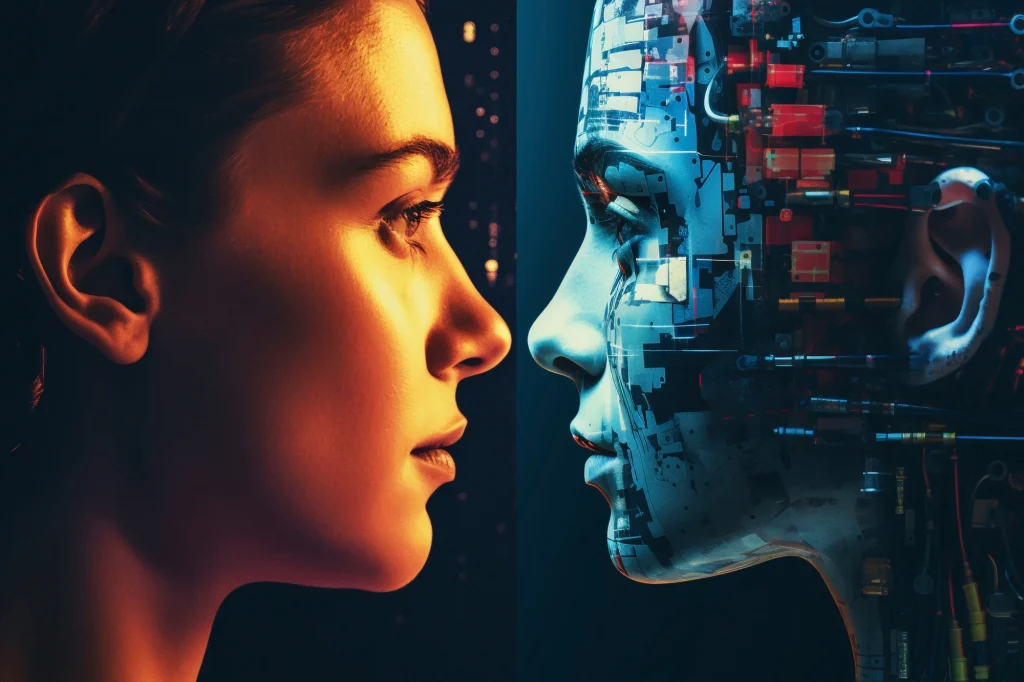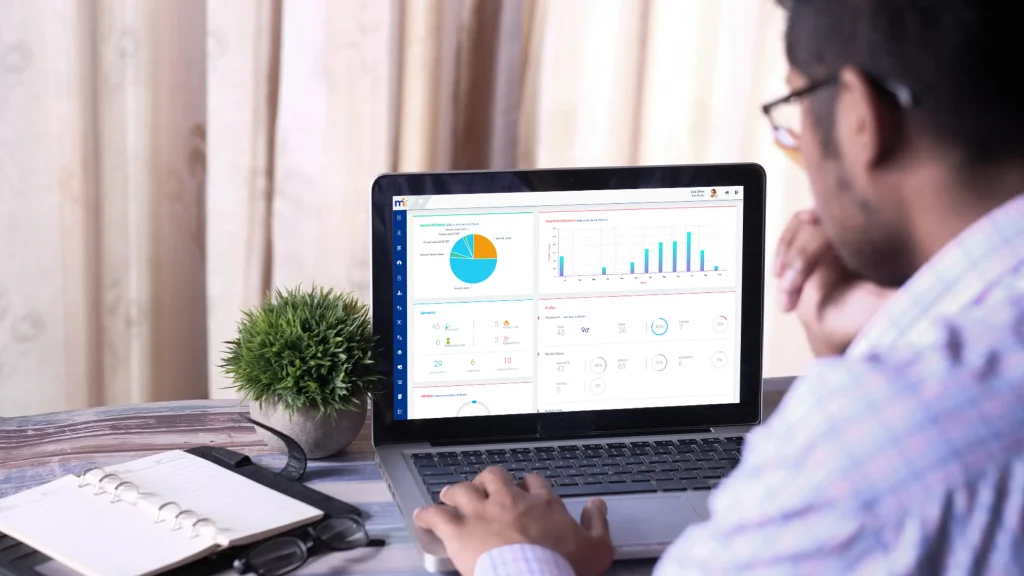The landscape of Human Resources (HR) is rapidly evolving, with HR digital transformation becoming a pivotal driver of change.
At its core, HR digital transformation involves leveraging technology to revolutionise traditional HR processes, making them more efficient, effective, and aligned with modern business needs.
This digital shift not only automates mundane tasks but also enhances the overall employee experience, enabling HR departments to focus on strategic initiatives rather than administrative chores.
The significance of this transformation is immense. In a digitally-driven world, organisations need agility and adaptability to stay competitive.
Digital HR transformation empowers companies to achieve these goals by integrating cutting-edge technologies like AI, machine learning, and cloud-based systems into their HR functions. This not only streamlines operations but also offers insightful HR analytics that drive data-driven decisions, thus enabling better strategic planning and decision-making.
Impact on organisational culture
One of the most compelling aspects of digital HR transformation is its impact on organisational culture.
By fostering an environment where data and technology enhance workplace interactions, companies can position themselves as attractive employers, known for their innovation and employee-centric practices.
This transformation aligns with the broader trend of consumer-grade experiences—where employees expect seamless, intuitive digital interactions akin to those they experience in their personal lives.
Indispensable tools

As the digital revolution continues to reshape the HR paradigm, the need for HR digital transformation tools becomes increasingly critical.
From AI-powered recruitment solutions to comprehensive HR management platforms, these tools are essential for automating and optimising the vast array of HR functions. They offer powerful ways to manage aspects like talent acquisition, onboarding, and employee self-service, all of which contribute to enhanced performance management and increased productivity.
In this section, we focus on indispensable tools such as AI, analytics, and cloud-based HR systems that play significant roles in revolutionising HR processes. These technologies ensure not only smoother operations but also add strategic value to management decisions.
1. AI and machine learning: AI and machine learning have taken HR digital transformation to new levels by automating routine tasks, thereby freeing human resources professionals to focus on strategic functions. These technologies facilitate predictive analytics, real-time data processing, and innovative approaches to recruitment, such as AI-powered candidate screening and virtual onboarding processes.
2. HR analytics platforms: Data-driven decisions are at the core of modern HR departments. Analytics platforms offer rich insights into employee performance, turnover rates, engagement levels, and more. Leveraging such insights through platforms like MiHCM Data & AI allows businesses to transform their workplace with HR analytics, addressing issues like productivity bottlenecks and fostering improved employee engagement. Features such as workforce analytics and dashboard offerings help organisations dive deeper into employee patterns for better HR planning.
3. Cloud-based HR management systems: Cloud-based solutions have become integral to HR digital transformation, offering scalability, flexibility, and accessibility from any location – crucial in today’s remote work environment. Utilising comprehensive systems like MiHCM Lite and MiHCM Enterprise, organisations can manage payroll, time and attendance, and workforce analytics from a single platform. These systems reduce the need for physical storage and documentation, significantly minimising paperwork and manual processing errors.
4. Integration of tools for seamless HR operations: The integration of these digital tools is vital for harmonious HR operations. It is important that different systems communicate effectively to maintain data integrity across recruitment, performance, and payroll processes. Our solutions are pivotal in streamlining these operations, ensuring that data seamlessly transitions between systems without additional manual input.
Improved efficiency and reduced paperwork
One of the primary advantages of HR digital transformation is the dramatic increase in operational efficiency.
By implementing tools such as AI and machine learning, routine administrative tasks can be automated, freeing up HR professionals to concentrate on more impactful activities. This not only reduces paperwork but also minimises the chances of human error, ensuring greater accuracy and reliability in HR processes.
Cloud-based HR management systems, like MiHCM Lite and MiHCM Enterprise, epitomise this efficiency with centralised data management, enabling seamless access and real-time updates from anywhere.
Enhanced decision-making with data insights

With the advent of sophisticated HR analytics platforms, decision-making processes are now more data-driven than ever.
For instance, MiHCM Data & AI provides rich insights into employee performance metrics, turnover trends, and engagement levels. Access to such detailed analytics fosters improved decision-making, allowing HR teams to identify and address potential issues early on.
This data-centric approach not only aids in aligning HR strategies with organisational goals but also enhances overall productivity by streamlining personnel management processes.
Impact on employee engagement and productivity
An often-underlined goal of digital HR transformation is the positive impact on employee engagement and productivity.
By utilising digital tools that offer self-service options and enhanced communication channels, employees enjoy a more inclusive and responsive workplace environment. This improved interaction fosters a sense of empowerment among employees, leading to higher job satisfaction and better performance.
The implementation of these digital HR transformation tools does more than just streamline operations; it redefines the role of HR from administrative support to strategic partner.
By reducing manual interventions and providing agile solutions, these tools enable HR professionals to focus on strategic initiatives such as talent development and succession planning, adding significant value to the organisational ecosystem.
Common challenges in HR digital transformation
1. Skill gaps and lack of expertise: One of the significant hurdles in digital HR transformation is the skill gap. Many HR departments may not possess the necessary technical expertise to leverage digital tools effectively. This gap can slow down implementation and lead to suboptimal use of available resources. Developing digital HR skills is essential, requiring targeted training programs and workshops to upskill HR teams.
2. Ethical concerns with AI usage: The integration of AI in HR processes, such as recruitment and performance evaluations, raises ethical questions. Concerns about bias, privacy, and data security must be addressed to ensure fair and transparent practices. Establishing a clear stance on ethical AI use and ensuring robust data protection measures can help manage these concerns.
3. Resistance to change and user adoption issues: Resistance to change is a common challenge when introducing new digital tools. Employees may be accustomed to conventional practices and sceptical of new technologies. Creating a robust change management plan is crucial to facilitate smooth transitions, involving HR team members and other stakeholders to promote acceptance and adoption of new systems.
4. Resource constraints: Resource constraints, such as budget limitations and limited IT infrastructure, can hinder the implementation of digital HR tools. It’s important for organisations to adequately assess and allocate resources effectively, prioritising solutions that offer the most significant impact.
Strategies to overcome challenges
1. Invest in training and development: To bridge the skills gap, organisations can invest in regular training sessions focused on digital literacy and the use of HR tools. Encouraging continuous learning and development helps HR professionals stay updated with industry trends and technologies.
2. Prioritise clear and transparent communication: Open communication regarding the benefits and changes associated with digital transformation can alleviate employee concerns. Regular updates, workshops, and feedback sessions can foster a culture of transparency and collaboration.
3. Engage stakeholders early: Incorporating key stakeholders, including management and employees, early in the transformation process ensures buy-in and support. Engaging stakeholders helps align transformation goals with organisational objectives, promoting a unified approach.
4. Select the right HR digital transformation tools: Choosing the appropriate tools that fit the organisational context and needs is vital. Solutions like MiHCM Enterprise and MiHCM Lite offer robust features that can be tailored to various requirements, facilitating ease of use and integration across existing systems.
How to choose the right HR digital transformation tools
Embarking on a journey of HR digital transformation involves selecting the right tools to enhance HR efficiency and align with your organisation’s strategic goals. Here’s a guide to ensuring you choose the most effective solutions for your needs.
- Alignment with organisational needs: Select tools that align with your company’s strategic objectives. This means understanding what your HR department needs to accomplish – be it improving employee engagement, streamlining payroll, or enhancing data-driven decision-making.
- User-friendly interface: The best tools are those that your HR team can easily navigate, minimising training time and promoting immediate adoption.
- Scalability: Ensure the tools can grow with your organisation. As your company expands, your HR solutions should be able to accommodate increased demands without significant re-investment.
- Integration capabilities: Choose tools that can seamlessly integrate with existing systems. Compatibility with platforms like HRIS systems simplifies processes and enhances data integrity.
Considerations for company size and future needs
- Company size: The scale of your operations dictates the complexity and capacity of the tools you require. Smaller businesses might benefit from more straightforward, cost-effective solutions like MiHCM Lite, whereas larger enterprises might prefer comprehensive systems such as MiHCM Enterprise to handle diverse HR needs.
- Future needs: It’s critical to anticipate future requirements to avoid repetitive investments. Consider tools that offer modular expansions, enabling you to add functionalities like enhanced analytics or AI capabilities as your organisation evolves.
Steps for integration and adaptation
- Conduct a thorough needs assessment: Prior to selecting tools, conduct an organisational assessment to comprehend precisely what functionalities are imperative for your operations.
- Engage key stakeholders: Include personnel from IT, HR, and management in the decision-making to ensure the chosen tool fits all operational requirements.
- Develop a comprehensive implementation plan: Create a detailed roadmap for deployment, including timelines, training sessions, and benchmarks for assessing the tool’s effectiveness.
- Training and support: Implement robust training programmes to ease the team into using the new tools and provide ongoing support to troubleshoot issues and facilitate user confidence.
The future of HR digital transformation
As technology continues to evolve, the future of HR digital transformation promises to be more dynamic and transformative than ever.
Emerging trends are set to redefine how organisations approach their human resource functions, integrating new tools and methodologies that drive efficiency and enhance employee engagement.
Here are some key trends shaping the future of digital HR transformation:
- Artificial Intelligence and automation: AI technology is expected to become more sophisticated, enabling even greater automation of repetitive tasks in HR operations. Enhanced AI capabilities will support predictive analytics, offering deeper insights into workforce trends and behaviours, thereby aiding in strategic decision-making.
- People analytics and data-driven insights: As organisations gather more data than ever, the role of HR analytics continues to expand. Future HR systems will harness big data to provide actionable insights, driving strategic initiatives such as talent acquisition, retention, and employee development. Data-driven HR decisions will become a cornerstone of effective human resource management.
- Personalised employee experience: The consumer-grade experience that employees expect in their personal lives is increasingly extending to the workplace. Future digital HR transformation will prioritise personalised experiences through customised onboarding processes, flexible benefit programs, and adaptive learning paths, ensuring employees feel valued and engaged.
- Remote and hybrid workforce solutions: The shift towards remote and hybrid work environments is set to continue, necessitating robust digital tools for workforce management. Cloud-based HR management systems will become even more integral, supporting seamless operations regardless of location and facilitating virtual team dynamics.
- Focus on ethical AI practices: As integration of AI in HR functions increases, so will the focus on ethical AI practices. Organisations will need to ensure transparent algorithms, unbiased recruitment processes, and privacy-conscious data handling to gain trust and maintain compliance.
- Integrated platforms for seamless operations: The future will see greater emphasis on integrated HR platforms that unify various functions such as payroll, performance management, and employee engagement. Tools like MiHCM Lite and MiHCM Enterprise are already setting the standard by offering comprehensive solutions that streamline HR operations.
The road to full HR digital transformation may still present its challenges, such as adapting to new technologies and overcoming skill gaps. However, the long-term benefits strongly outweigh these hurdles.
As we look ahead, the key to successful digital transformation lies in the strategic implementation of emerging technologies, keeping focus on aligning HR strategies with overarching business goals.



